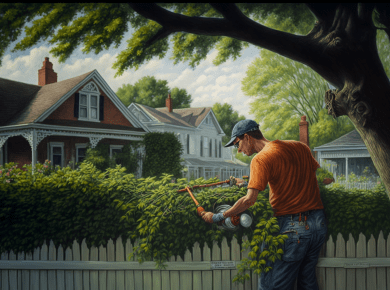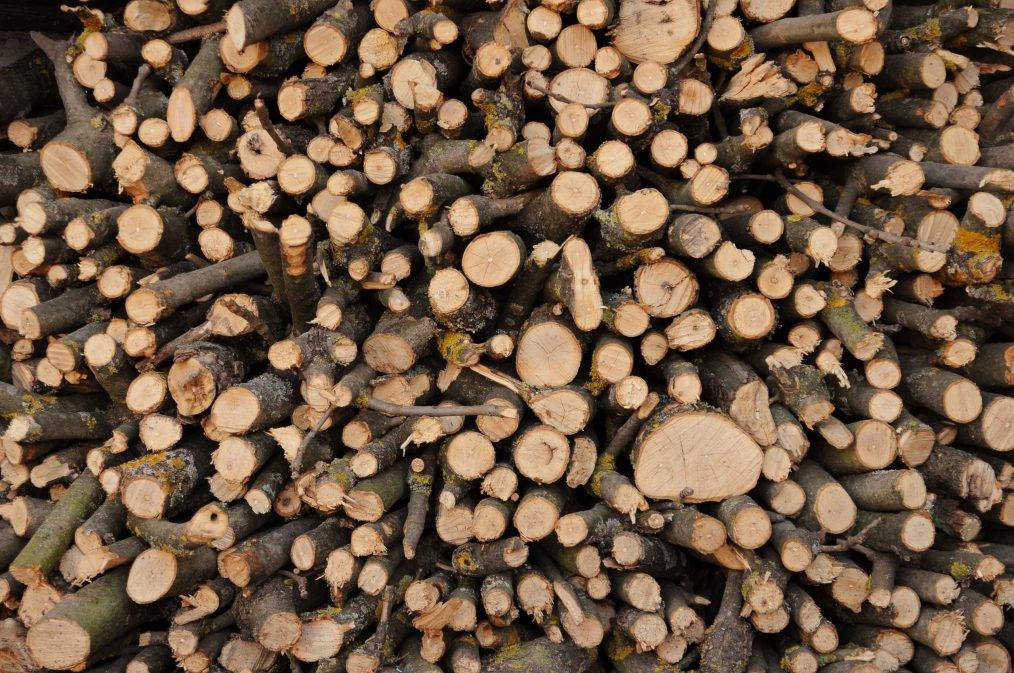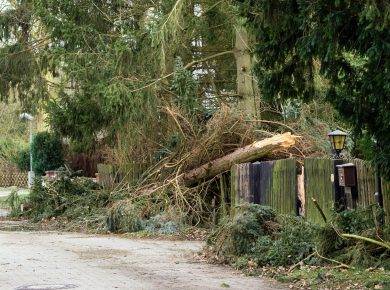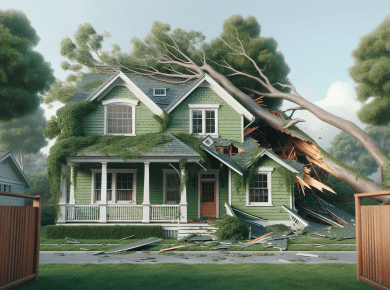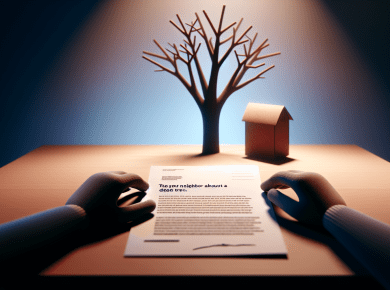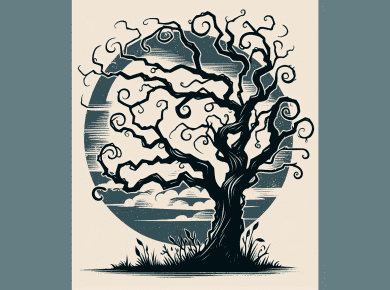Who Owns That Tree?
Dealing with a tree right on the property line? Knowing who the tree belongs to can nip conflicts in the bud and help neighbors get along.
Where’s That Trunk At?
Tree ownership boils down to where the trunk is hanging out. If the trunk is fully on your land, it’s your tree. But if it’s chilling right on the boundary line, things get interesting. It’s called a “boundary tree,” and both neighbors have to play nice and share the love and the maintenance.
Now, if you’re thinking about taking a chainsaw to that boundary tree on your own, hold your horses. Without your neighbor’s go-ahead, you could be wading into hot water—legally speaking. Imagine getting slapped with a bill for three times the tree’s worth because you went rogue. Ouch.
| Tree Trunk Location | Who’s the Boss? |
|---|---|
| Fully on one property | That property owner |
| Straddling the line | Both neighbors |
Take Ohio, for example. If a tree springs up on the property line, shut the front door—it’s a shared baby. That means both you and your neighbor need to put your heads together before any snip, trim, or chop. Pack some patience and have those heart-to-hearts to avoid an all-out tree war.
Think your property can host a one-sided trim job? Not so fast. Even if those branches are whispering over to your side, you gotta clear it with your neighbor first. Playing lone ranger here could stir up more trouble than it’s worth.
Sharing a tree isn’t just about following the rules—it’s about keeping the peace. Got a branch wreaking havoc on your shingles or messing with your garden vibes? Chat with your neighbor. Humor and a little give-and-take can go a long way.
Wanna know more about who foots the bill if the tree falls? Check out our guide on who handles a fallen tree.
Getting tree ownership right makes life easier. So, aim for friendly talks, respect the shared assets, and you’ll keep the neighborhood drama-free.
Your Rights and Responsibilities with Neighbor’s Trees
Got a tree that’s getting a little too friendly with your neighbor’s yard? Or maybe they’ve got branches invading your space? Here’s what you need to know to keep the peace and your property intact.
Who’s Paying for the Damage?
Got a tree messing up your neighbor’s garage or driveway? Here’s the lowdown on who foots the bill:
If a tree on your property decides to cause some chaos, it’s your wallet that’s taking the hit—unless Mother Nature gets involved. When a storm knocks down a healthy tree, for example, it’s not really anyone’s fault, so the cost usually falls to whoever owns the land where the tree falls. Got a tree on the border? Things get a bit murky. You might be in the clear unless you’ve been ignoring that it’s rotting away (Lawnstarter).
Now, if a tree on your land shows signs of trouble and you’ve been turning a blind eye, your neighbor could make you pay if something goes wrong (Lawyers Columbus Ohio). And if your neighbor, or someone they hired, screws up your tree? They owe you.
Here’s a quick cheat sheet:
| Scenario | Who’s Responsible? |
|---|---|
| Tree on your property causes damage | You’re on the hook |
| Neighbor’s iffy tree does damage | They might need to pay |
| Act of God (like a storm) | Tough luck, usually no one’s fault |
| Dead tree branch falls due to neglect | Whoever neglected the tree could be liable |
In Ohio, if your neighbor knew that their tree was diseased or in bad shape and it crashes onto your property, they could be liable. But if the tree looked fine, they’re probably not in trouble (Ohio State University Extension).
Can I Trim That Tree?
Got tree branches creeping into your space? You’re allowed to play barber, as long as you keep it reasonable (Lawnstarter). But heads-up: If the tree sits on the boundary line, you and your neighbor technically share it. It’s polite (and often legally smart) to ask before you start cutting.
Ohio law has your back when it comes to trimming branches that overstep onto your land. Just do it without killing the tree, or you might get into hot water (Ohio State University Extension).
Here’s what you need to know:
| Action | What’s Allowed? |
|---|---|
| Cutting branches on your property | Go for it up to the lot line |
| Trimming shared trees | Get the okay for anything beyond your side |
| Removing overhanging branches | You can do it, but don’t harm the tree |
Being in the know about your rights can help you handle tree disputes like a pro. For more info on dealing with overhanging branches and other tree-related questions, check out our handy resources here.
Legal Talk in Ohio – Property Line Trees and Tree Removal
Imagine this: You and your neighbor have a tree that sits right on your shared property line. In Ohio, that means you both own it. Yep, halfsies! So, any big decisions about this green giant—like trimming or chopping it down—require mutual thumbs-up.
Now, if your neighbor goes all rogue and decides to axe the tree without your go-ahead, they might find themselves in hot water. By Ohio law, they could owe you three times the tree’s value, thanks to reckless removal (Ohio State University Extension).
Tree Removal Rules: Ohio’s Playbook
Here’s the deal: if you own a tree, you generally won’t get in trouble if it causes damage—as long as you’ve been a good tree parent. Negligence is a no-go. If you knew the tree was iffy and did nothing, you could be on the hook (Lawyers Columbus Ohio).
In the city, it gets a bit trickier. If there’s something obviously wrong with your tree, you’re supposed to check up on it regularly. Ignorance isn’t bliss here—failure to act can land you in legal woes (Lawyers Columbus Ohio).
Now, about those pesky overhanging branches. If your tree’s limbs stretch into your neighbor’s yard, you don’t have to cut them unless you know they’re problematic (Lawyers Columbus Ohio).
Stuck in a tree tiff with your neighbor? Understanding these rules can help sort out the mess. Sometimes, though, it’s smart to get a legal eagle involved. Feeling the itch to know more? Check out who handles fallen trees or who trims those overhanging branches.
Resolving Disputes Amicably
Talking about property line trees can be a real pickle. However, a friendly and cooperative approach usually smooths things out nicely. Here’s how you can handle these tricky tree issues and avoid potential neighborly squabbles.
Tackling Property Line Trees
When a tree trunk straddles the property line, both neighbors get dual ownership of the tree. But hey, before anyone goes all Paul Bunyan on it, both neighbors need to agree on any major moves, like removal. If branches from the tree are creeping over to your side, you can trim them. However, for anything beyond that, like chopping more branches or taking down the whole tree, you need your neighbor’s thumbs up.
Here’s a step-by-step guide to keeping things cool:
- Chat It Out: Have a friendly conversation with your neighbor about any tree issues or plans you might have. Open dialogue often nips misunderstandings in the bud.
- Get It In Writing: If you both agree on something like trimming or removing the tree, jot it down. Written agreements come in handy if disputes crop up later.
- Call in the Pros: Sometimes it’s best to get a certified arborist in the mix. They can assess the tree’s health and suggest the best course of action. This can help both parties agree more easily on how to care for the tree.
Nipping Neighbor Disputes in the Bud
Being proactive is the key to nailing down disputes before they mushroom. Here are a few practical tips:
| Strategy | Description |
|---|---|
| Regular Check-ins | Meet now and then to discuss how the tree is doing and any upkeep needed. |
| Maintenance Plan | Create a maintenance plan listing out who handles what, like trimming or health checks. |
| Learn the Rules | Get a handle on your local tree laws and regulations. Knowing your rights and duties helps maintain the peace. |
Before you make any moves regarding tree disputes, it’s vital to know who owns the tree and where the property lines are. Typically, the owner of the land on which the trunk sits owns the tree. If it’s a boundary tree – meaning the trunk sits smack dab on the property line – both neighbors share the responsibility for its care.
Taking these proactive steps can keep things harmonious and help dodge those messy disputes. And if problems do arise, consulting a legal whiz might clarify who’s responsible and what rights you each have regarding the tree.
Dealing with tree disputes with your neighbors? Understanding local laws is key. Here’s the lowdown on local tree rules and view protection laws. Knowing these can save you headaches and keep the peace with your neighbors.
Local Tree Rules
Local tree rules vary a lot and dictate what you can and can’t do with your trees. They cover tree care, removal, and planting, ensuring everyone’s on the same page.
| Rule Type | What’s It About |
|---|---|
| Tree Care | How to keep trees safe and neat. |
| Tree Removal | When and how you can remove trees, plus required permits. |
| Planting Rules | Guidelines for planting new trees, sometimes listing approved types. |
Get to know your local rules to avoid clashes and keep things legal. Check out a more detailed guide at Tree Resolutions.
Understanding View Protection Laws
Some places have view protection laws to ensure no one’s scenic views get blocked. These rules can make you trim or even remove trees if they obstruct a neighbor’s view.
| Key Points | Details |
|---|---|
| What’s the Point | Keeps the nice views and property values intact. |
| What’s Required | You might need to trim trees that block your neighbor’s view. |
| What Happens If You Ignore | Can spark neighbor disputes or even legal trouble. |
Keep the peace by knowing these rules and talking things out with your neighbors. For more tips, read up on who is responsible for fallen tree removal and who is responsible for cutting overhanging tree branches.
Stay informed and neighborly to handle tree disputes the right way.
Professional Tips
Dealing with tree disputes along property lines can be a real headache, but getting some expert advice can make things a whole lot easier. Here, we’ll dig into the perks of hiring certified arborists and share some top tree care tips.
Why Certified Arborists Matter
Getting yourself a certified arborist can be a game changer. These folks know their stuff when it comes to tree health and the risks trees might pose. With their unbiased advice, they can help keep neighborly bonds tight and trees looking their best Tree Resolutions.
Hiring one means you’re not only taking good care of your trees but also sticking to local rules. They guide on how to handle trees sitting right on the property line. If a tree trunk is shared by two properties, it’s both of yours. No chopping it without a handshake and a thumbs-up from your neighbor Lawnstarter.
Top Tree Care Tips
Keeping up with tree maintenance is key to avoiding neighbor quarrels and keeping your property spiffy. Check out these handy tips:
| What to Do | How to Do It |
|---|---|
| Regular Check-Ups | Give your trees a once-over now and then to catch any health issues or critters before they become big problems. |
| Pruning | Keep those branches in check to keep trees healthy and prevent them from poking into your neighbor’s yard. You can trim to the property line, but do it right to avoid damaging the tree Ohio State University Extension. |
| Document Everything | Snap some pics and keep receipts of all maintenance work. It’s a lifesaver if disputes come up. |
| Talk to Local Authorities | Know the local tree trimming and removal laws to stay out of hot water and keep things smooth with the neighbors Lawnstarter. |
Stick to these tips and bring in a certified arborist when needed, and you’ll be well on your way to keeping tree troubles at bay. For more tips, check out our articles on who is responsible for cutting overhanging tree branches and fallen tree removal.


